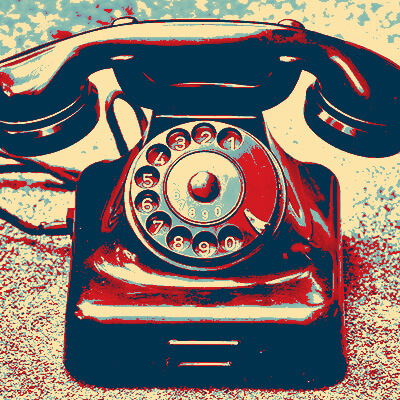I was so pleased to find GroovyTek. Although I am pretty tech savvy in some areas there are others where I need help. GroovyTek has helped me fill in that gap of information. I made an appointment to help me sync my devices and also help me learn how to organize my photos. The trainer was knowledgeable and able to explain things very clearly.
Need Help? Call Us.
877.201.3586
Cell Phone Technology Timeline

The concept of cellular phones has been around since the late 1940s. Yet, it wasn’t until the mid-1950s that technology was able to allow the idea to become a reality. It took a few decades to figure out how to make the technology work for ordinary routine calls. It was Martin Cooper, a Motorola researcher and executive, who made the first cell phone call on April 4, 1973 to Dr. Joel S. Engel at Bell Labs. It would be another decade still before the technology was made available to consumers. The world of communication has not been the same since. Today we take a look at the timeline for cell phones and its history.
Timeline of Cell Phone History
1983
1G (First generation)—the first analog cellular system is widely deployed in the United States
The first analog cellular system is called 1G (1st Generation). Quickly, several companies sprout up and build an analog cellular network. What is an analog system? It’s a system designed to send sound signals of varying frequencies to transmit information.
MID 1990’S
2G (2nd Generation)—the first digital cellular phone system emerges
Digital 2G quickly displaces analog 1G networks. Instead of using varying sound frequencies, this new digital system translates everything into a string of data points - Os and 1s. 2G makes it possible to transmit information significantly faster than the analog system, and is able to support photos, music, and texting (Short Message Service or “SMS”), while protecting our privacy more effectively.
MID 2000S
3G (3rd Generation)—the next generation of digital cellular phone systems is introduced
The launch of 3G networks represents a turning point for the potential of what cellular data systems can support. Due to the vastly improved speeds and much stronger capacity to carry information, a phone might be able to do more than just talk and text.
JUNE 29, 2007
The iPhone is born
Apple introduces the iPhone and the smartphone as we know it is born. Apple takes advantage of the increased speed and capacity of 3G. Now, your phone actually becomes much more than a mechanism to talk and text.
The smartphone also changes the way we interact and command a phone by launching the touchscreen; we now tap and swipe. Additionally, Apple opens up a whole new world of possibilities with the advent of “apps” (custom designed applications and functions). The consolidation of our personal technology to one device begins.
RECENT 2000S
4G (4th generation)—the next generation of digital cellular phone systems is introduced
4G represents an even more pronounced development in terms of speed and volume of data for a cellular network. While carriers transition to 4G, devices are still not utilizing the full capacity a 4G network can provide. Think of it as trying to get a sip of water from Niagara Falls and you can see the problem.
ALL TOO SOON
5G is now being tested
It’s still not known exactly when the 5G network will be available, but we do know that when it happens it will represent another transformation in the landscape of personal technology. Suffice it to say, we’ll have a new environment with new options to explore when 5G is launched.
Client Reviews
I'm very pleased with my session today with GroovyTek. My trainer was able to fix both my computer and my printer (problems with both) and instructed me on how to correct the issues if they occurred in the future. We also made plans for my next session. I find GroovyTek sessions extremely helpful and convenient since they are in my home.
Eva S
I had a session with GroovyTek over the phone today. It was extremely helpful to me because I was able to see everything that he was doing on my computer as he was talking. I was then able to follow his actions to do what he was doing as well. What a way to go!
Carole M
I was just delighted and on my way to practice new found skills. My trainer was on time, friendly, knowledgeable, and very patient with this little old lady (age 78). I didn't have to take notes to remember - he recorded it on his tablet and sent me a copy to download so I have my instructions, step by step. So pleased with the service and the follow-up.
Karen M
The trainers are so friendly, and helpful. They certainly have lots of patience and knowledge. They make you feel so comfortable asking questions you would not dare ask your family to show you again how to do. They are always welcome in my home, sometimes I hate to see them go!
Debera F
Very impressed with my trainer’s ability to provide thorough explanations and demonstrations. I have confidence now in knowing how to manage my photos, videos, and documents. I received my money’s worth of valuable instruction.
Cheryl M
I have always had the best computers that Apple offered, but the problem was that I never knew how to use them. Thanks to my GroovyTek trainer, my tech skills have increased exponentially and I am feeling more competent and confident with each lesson.
John B
Spectacular people. Knowledgeable, professional, customer focused and easy to work with. I have used their services a couple of times (because I am over 40) and they are great to work with.
Jim H
My tech from GoovyTek has been terrific. He is patient, knowledgeable, and explains things really well. I enjoyed learning new tools and features on my smart phone and computer. They have made doing things a lot easier and more enjoyable.
Jennifer H
I have been very pleased with the IT trainers from GroovyTek who have been to my house. They were very helpful!
Karen B
My tech is patiently bringing me (at age 79) into the computer age. I am so glad that I found him through GroovyTek. What a wonderful gift!
Judy K
Very pleased with the experience. Knowledgeable trainer who was most helpful. Highly recommend the service.
Michael M
Excellent help from our GroovyTek trainer. He spent an hour explaining issues that I was confronted with, on my computer, and corrected all my issues and problems. He was concise, knowledgeable and forthright and I will call on him and GroovyTek again whenever I need help and support. I highly recommend GroovyTek services!
Laura M
Outstanding trainers with expertise and a lot of patience at a fair price. I have used them for two years and they have given me a much better understanding of the in's and outs of how to use many aspects of my computer. It is a pleasure to have them come to my home and work on my own computer problems.
Jerry P
GroovyTek has helped me, a 65 year old, learn how to do all sorts of things on my computer that I did not know about before. I had no one else to ask, and they have rescued me. It's so great to have a polite, friendly, knowledgeable person come to my house and teach me. What a wonderful service!









